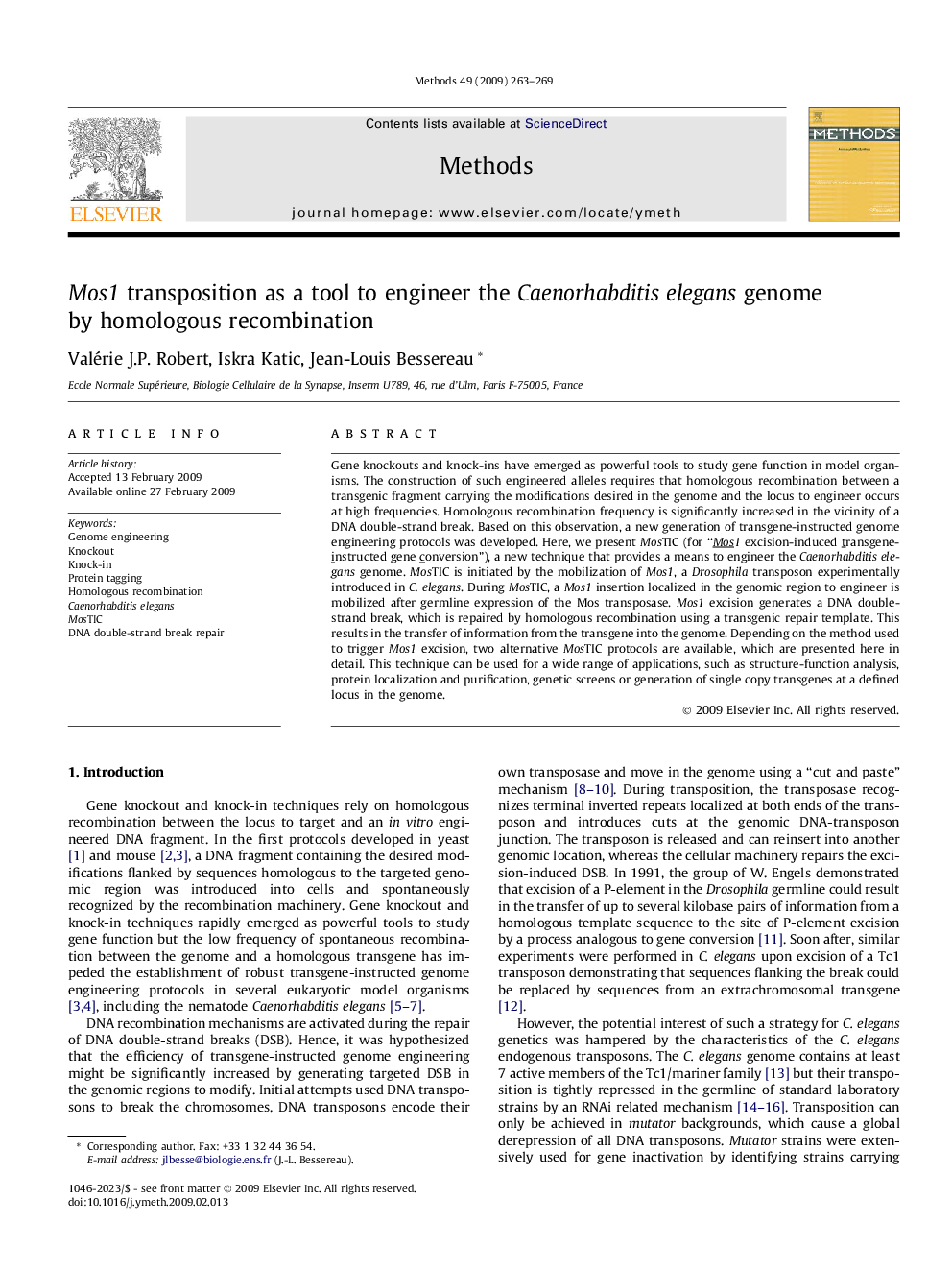| کد مقاله | کد نشریه | سال انتشار | مقاله انگلیسی | نسخه تمام متن |
|---|---|---|---|---|
| 1993738 | 1064702 | 2009 | 7 صفحه PDF | دانلود رایگان |

Gene knockouts and knock-ins have emerged as powerful tools to study gene function in model organisms. The construction of such engineered alleles requires that homologous recombination between a transgenic fragment carrying the modifications desired in the genome and the locus to engineer occurs at high frequencies. Homologous recombination frequency is significantly increased in the vicinity of a DNA double-strand break. Based on this observation, a new generation of transgene-instructed genome engineering protocols was developed. Here, we present MosTIC (for “Mos1 excision-induced transgene-instructed gene conversion”), a new technique that provides a means to engineer the Caenorhabditis elegans genome. MosTIC is initiated by the mobilization of Mos1, a Drosophila transposon experimentally introduced in C. elegans. During MosTIC, a Mos1 insertion localized in the genomic region to engineer is mobilized after germline expression of the Mos transposase. Mos1 excision generates a DNA double-strand break, which is repaired by homologous recombination using a transgenic repair template. This results in the transfer of information from the transgene into the genome. Depending on the method used to trigger Mos1 excision, two alternative MosTIC protocols are available, which are presented here in detail. This technique can be used for a wide range of applications, such as structure-function analysis, protein localization and purification, genetic screens or generation of single copy transgenes at a defined locus in the genome.
Journal: Methods - Volume 49, Issue 3, November 2009, Pages 263–269